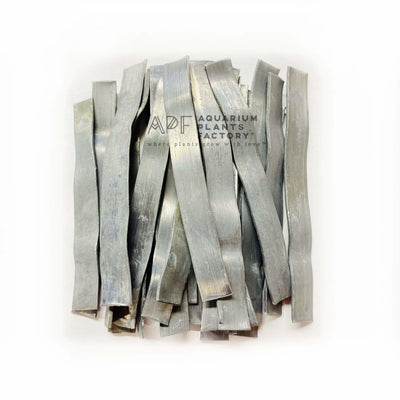Inspect Marimo Moss Ball for Zebra Mussels
State agencies ask public to inspect Marimo Moss Ball / Cladophora and prevent movement of invasive Zebra Mussels
Please help spread the message

This week, the U.S. Geological Survey released a public report of potential invasive mussels detected in shipments of “Betta Buddy” brand Marimo moss balls at a Seattle Petco. The Washington Department of Fish and Wildlife (WDFW) investigated the report and visually confirmed the presence of the zebra mussels.
Once alerted, several other states have reported the presence of both live and dead zebra mussels at other retailers. State agencies ask anyone who has purchased Marimo Moss Balls from any retailer to inspect it for invasive zebra mussels.
We are taking this very seriously at Aquarium Plants Factory as we are committed to the health and wellness of our planet. We stand behind our national and local agencies and ask that you inspect your Marimo Moss Balls purchased from us or any other retailer for these invasive zebra mussels. We decided to stop distribute Moss Ball until the USDA, US Fish & Wildlife and other authorities approve the moment of Moss Ball. As of now, there are a few states already temporarily banned the distribution and sale of Moss Ball because it may contain Zebra Mussels.
We have never personally seen any of the zebra mussels in any product we have ever shipped; however, it is the responsibility of all of us to do our part in protecting our national waters.
If you do find evidence of the invasive zebra mussels on any moss ball you may own, please follow these instructions:
Methods to safely dispose of the moss ball(s) kept in a small terrarium:
- Remove the moss ball(s) and place them in a plastic bag. Put the bag in the freezer and leave for at least 24 hours. After that, the moss ball(s) can be disposed of in the trash.
- Place moss ball(s) in boiling water for at least one full minute. After that, the moss ball(s) can be disposed of in the trash.
Methods for disposing of moss ball(s) kept in an aquarium:
- Collect the fish & plants and place them in another container. Dispose of the water in a sink or toilet. All municipal wastewater is treated to kill all pathogens, and septic tanks are fully self-contained underground.
- Carefully use water that is 140 degrees to flush and coat all the tank and accessory surfaces. It is recommended that you do another water change within a week and continue to monitor the tank for any unusual aquatic growth.
- If you do not have access to high-temperature water, a 1/3 cup of unscented household bleach per gallon of water can be used as a disinfectant. Allow the aquarium, substrate, rocks, décor, and filter media to soak in the bleach water solution for 10-15 minutes. After adequate contact time, thoroughly rinse off all items before resetting up the aquarium. When resetting up the aquarium, dispose of the previously used filter media and replace it with new media. Finish by using a dechlorinating product to neutralize any residual chlorine before reintroducing aquatic life.
- For extremely large aquariums that you may not be able to completely dewater/decontaminate, dispose of the moss ball(s) as above. Officials recommend that the public conduct frequent water changes and monitor the tank for any unusual aquatic growth.
--------- Credit: CTV News : Michael Franklin
Are there mussels on your moss balls? Alberta officials warn of tiny invasive species

Aquarium owners who have recently received moss balls for their tanks are advised to check them for zebra mussels, an invasive species. (Alberta Environment and Parks)
Zebra mussels pose "a significant threat" to Alberta's waterways, the province says, especially because they are extremely difficult to eradicate.
"Invasive mussels are filter feeders that strain suspended matter and food particles out of the water, disrupting natural food chains and leading to a depleted fishery (fewer and smaller fish) as the fish don't have enough food," a government document reads.
All of the moss balls in the shipment were seized under the Fisheries Act, officials say.

(Supplied/Alberta Environment and Parks)
Meanwhile, any aquarium owners who've recently received moss balls through the mail are encouraged to inspect them for any zebra mussels that may have hitched a ride.
"Inspect your moss balls for invasive mussels both visually and by feeling for hard shells. Remember – they can be very small!" the province says.
Anyone who believes they may have found any mussels are encouraged to call the 24/7 hotline at 1-855-336-2628.
Residents should place any infested moss balls they find into a sealable plastic bag and freeze them for at least 24 hours. The moss ball, along with all of its packaging, must then be thrown into the garbage.
"Please do not flush moss balls down the toilet or dispose of them in the compost," officials say. "Invasive mussels pose a serious threat to Alberta’s aquatic ecosystems, fisheries and water infrastructure like irrigation canals. Never dump aquarium tank pets, plants or water into any residential water system or Alberta waterway."


(Supplied/Alberta Environment and Parks)
Zebra mussels, which can produce about one million eggs each year, do not possess any natural predators in Alberta.
The province says if a mussel infestation occurred here, it would cost $75 million per year to repair the damage caused to waterways, infrastructure and lost revenue from recreational fishing.



![A Bucephalandra Surprise Tissue Culture [ Premium Full Bag / Cup ] - Mystery Box](http://aquariumplantsfactory.com/cdn/shop/products/a-bucephalandra-surprise-tissue-culture-premium-full-bag-cup-mystery-box-765676_{width}x.png?v=1700726730)

















Leave a comment